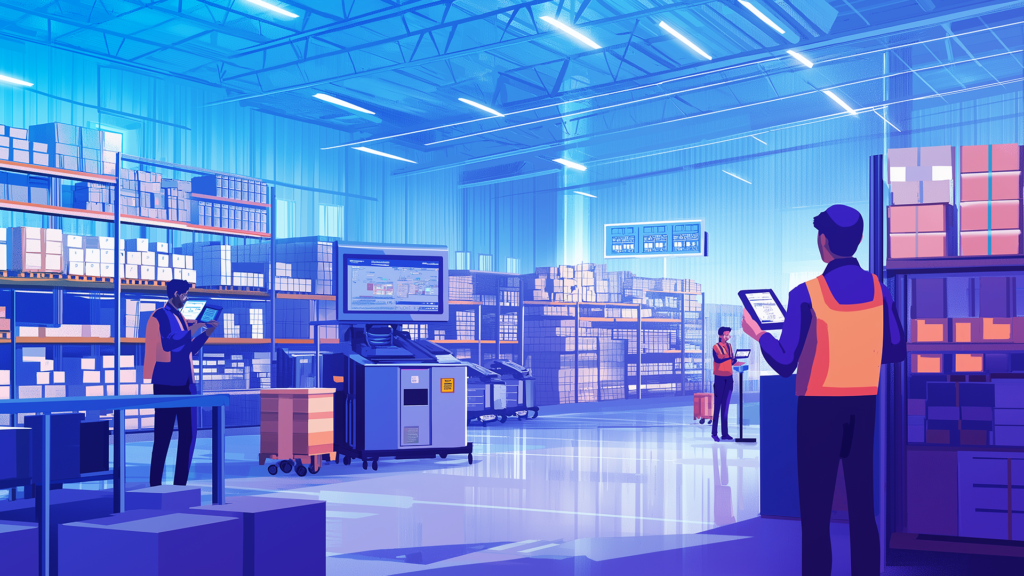How to Boost Your Team’s Efficiency
What is a Labor Management System and How Does it Help Warehouses? Labor Management Systems (LMS) are crucial for optimizing warehouse operations, as labor typically accounts for 60% of costs....
A Warehouse Manager's Guide for Optimizing Labor Metrics
On January 16, 2025
What is a Labor Management System and How Does it Help Warehouses?
Labor Management Systems (LMS) are crucial for optimizing warehouse operations, as labor typically accounts for 60% of costs. If you want to stay competitive, efficient labor management is essential to your warehouse.
LMS tools track employee activity and measure productivity across various criteria, offering insights by customer, supervisor, shift, or facility. This data enables fact-based management, improves employee engagement, and reduces biases in supervision.
A strong LMS boosts productivity, enhances company culture, cuts costs, and allows reinvestment. Traditional on-premises LMS systems, however, are costly and complex, requiring extensive setup and long implementation times.

General Tips for Improving Your Labor Efficiency
Cloud-based SaaS LMS solutions provide a better alternative with lower upfront costs, quicker deployment, and reduced risk through subscription-based models.
Effective labor management is crucial for the smooth operation of any warehouse. By tracking and optimizing key metrics, warehouse managers and supervisors can enhance productivity, reduce costs, and improve overall performance. This checklist is designed to provide actionable guidance on managing labor effectively, using general best practices and improvement tips.
Create a continuous improvement culture. When you have visibility to key metrics and share with team, people are more likely to bring up barriers to improvement.
Never miss a story. Stay updated about Rebus news as it happens.
Key Metrics to Track
1. Throughput
- Description: Gives you an overall view of building performance.
- Goal: Monitor the number of units that move through the facility within a specific timeframe.
- Tip: Establish target throughput levels based on historical data and industry standards.
2. Units Per Hour (UPH)
- Description: Measures the number of units processed per hour.
- Goal: Maintain or improve UPH to ensure high efficiency.
- Tip: Regularly review and optimize workflows to enhance productivity.
3. Hours in the Building
- Description: Tracks the total hours employees spend in the warehouse.
- Goal: Ensure efficient use of labor time.
- Tip: Monitor and reduce idle time by aligning shifts with workload demands.
4. Utilization (Indirect Hours Breakdown)
- Description: Breakdown of indirect hours (e.g., meetings, training).
- Goal: Minimize indirect hours to maximize productive time.
- Tip: Schedule indirect activities during low-demand periods.
BONUS TIP: Reduce idle time to increase utilization. Idle time occurs when work is not smoothed out and when people need to bounce between activities.
5. Top 5 Performers
- Description: Identify the top 5 employees based on performance metrics.
- Goal: Recognize and reward high-performing employees.
- Tip: Use performance data to mentor and train other employees.
6. Bottom 5 Performers
- Description: Identify the bottom 5 employees based on performance metrics.
- Goal: Provide additional training and support to improve performance.
- Tip: Address performance issues with constructive feedback and development plans.
7. Overtime
- Description: Tracks the amount of overtime worked.
- Goal: Manage and reduce overtime to control labor costs.
- Tip: Optimize scheduling and staffing levels to minimize overtime needs.
BONUS TIP: Zero OT can be an indicator of being overstaffed (work expands to fill the day)
8. Labor Forecast
- Description: Predicts future labor needs based on historical data.
- Goal: Ensure adequate staffing levels without overstaffing.
- Tip: Use forecasting tools to plan for peak and off-peak periods.
9. Cost to Serve
- Description: Measures the cost associated with serving customers.
- Goal: Reduce costs while maintaining service quality.
- Tip: Implement cost-saving initiatives and streamline operations.
10. Performance Trends Over Time
- Description: Tracks performance metrics over a specific period.
- Goal: Identify trends and make data-driven decisions.
- Tip: Regularly review and adjust strategies based on performance data.
11. Site, Shift, Team, Employee, Travel Distance
- Description: Monitors various aspects of labor performance across different variables.
- Goal: Optimize performance at all levels and locations.
- Tip: Use targeted strategies to address specific performance challenges.
Is Your Warehouse Visibility Tracking the Right Metrics?
How many are you currently tracking? What areas could you improve?
- Dwell time
- On-time shipments
- Skew velocity
- Inventory levels
- Inventory turnover
- Order accuracy
- Warehouse utilization
- Congestion/heat maps
General Improvement Tips for Labor Management
- Regular Training: Ensure employees are well-trained and up-to-date with best practices.
- Clear Communication: Maintain open lines of communication between management and staff.
- Technology Integration: Use technology to streamline operations and track performance accurately.
- Employee Engagement: Foster a positive work environment to boost morale and productivity. Consider a recognition and reward program.
- Flexibility: Be adaptable to changes in demand and adjust labor strategies accordingly.
Conclusion
By effectively tracking and managing these key metrics, warehouse supervisors and managers can optimize labor performance, enhance productivity, and improve overall operational efficiency. For personalized advice and further assistance, consider booking a consultation with the experts at Longbow Advantage.








